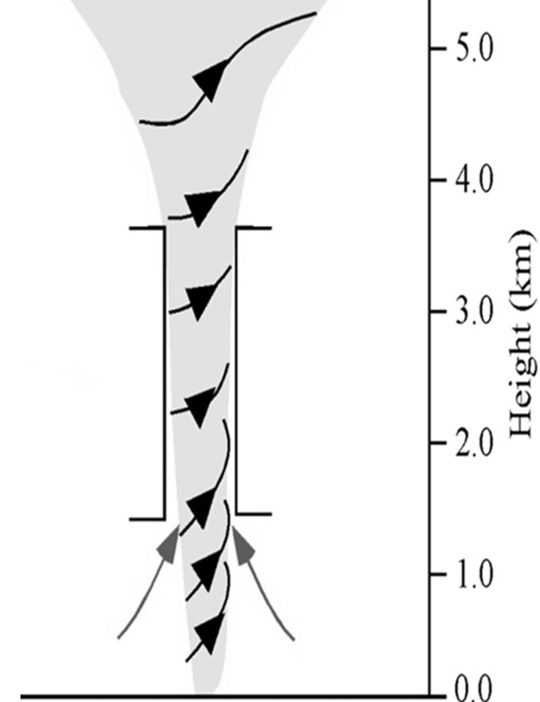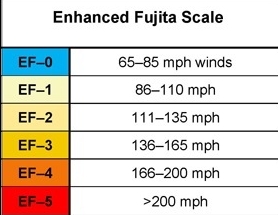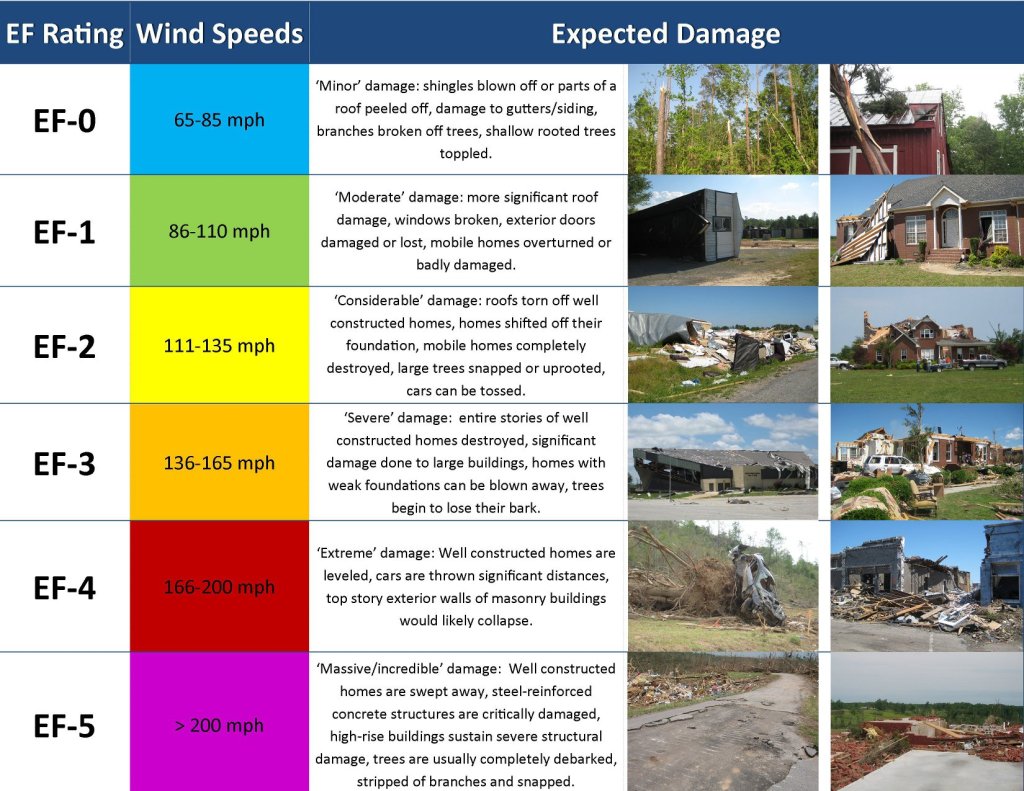TORNADOES
Tornado
rapidly rotating narrow region of low P
– form during intense thunderstorms.
– Wind speeds from 70-300 mph
– P can be as low as 900 mb
Tornado Development
Step 1: Rotating body of air at the ground
– This occurs because of vertical wind shear
A. Wind speeds increase with altitude
B. Drag & Friction: decreasing wind speed at surface
Step 2: Horizontal rotating air is lifted off the ground by the Updraft of Thunderstorm
– MESOCYCLONE: the horizontal rotating air mass if lifted vertically
Step 3: Mesocyclone is fully developed in the updraft of a thunderstorm
– If a tornado develops it descends from the slowly rotating wall cloud, in lower of cloud
Mesocyclone
vertical cylinder of rotating air, 3-10 km
Develops in the updrafts of severe T-Storms
Usually precedes tornadoes by 30 min
Stretching of the mesocyclone column causes faster rotation
Just like a figure skater, Something that begins with a larger diameter rotating at a slow speed begins to rotate faster as the tube is elongated & the diameter

Thunderstorm & Tornado
From the wall cloud a very narrow, fast rotating structure emerges
This forms a funnel cloud (as long as the cloud does not touch the ground)
As soon as the funnel cloud touches the groundit is called a tornado
Suction Vorticies
Some tornadoes have multiple suction vortices
Intense areas of high winds that are part of ONE tornado
There can be 4-6 suction vortices
The stronger the tornado the more vortices
Weak tornadoes usually don’t have them
Tornado Classification
Classified as
WEAK: rope like & narrow
STRONG: the classic funnel shape
VIOLENT: have lots of debris associated with them & can be quite dark in color
Fujita & Enhanced Fujita Scale
– Scale for Damage caused by tornadoes
– Wind Speed, Amount & Type of damage
There are 2 scales used
Fujita Scale (F)
Enhanced Fujita Scale (EF)


The End
